Le Plus Noir des Noirs !
Even though many other fleece colors exist in Ouessant sheep, such as white, brown, rusty midsides, and ouessant swiss, it is often said that Ouessant sheep are a breed of black sheep.
To a certain degree this is true as the vast majority of Ouessant sheep are indeed black.
But let’s look a little closer at these lovely black Ouessant sheep.
First, at birth all black Ouessant sheep are very black.
Bien qu’il existe d’autres couleurs de toisons chez le mouton d’Ouessant comme le blanc, le brun, le rusty midsides, et l’ouessant swiss, on dit souvent que le mouton d’Ouessant est un mouton noir.
D’une certaine façon, c’est vrai parce que la grande majorité des moutons d’Ouessant sont bel et bien noirs.
Mais regardons de plus près ces jolis moutons d’Ouesant noirs.
D’abord, à la naissance, l’ensemble des moutons d’Ouessant noirs sont bien noirs.
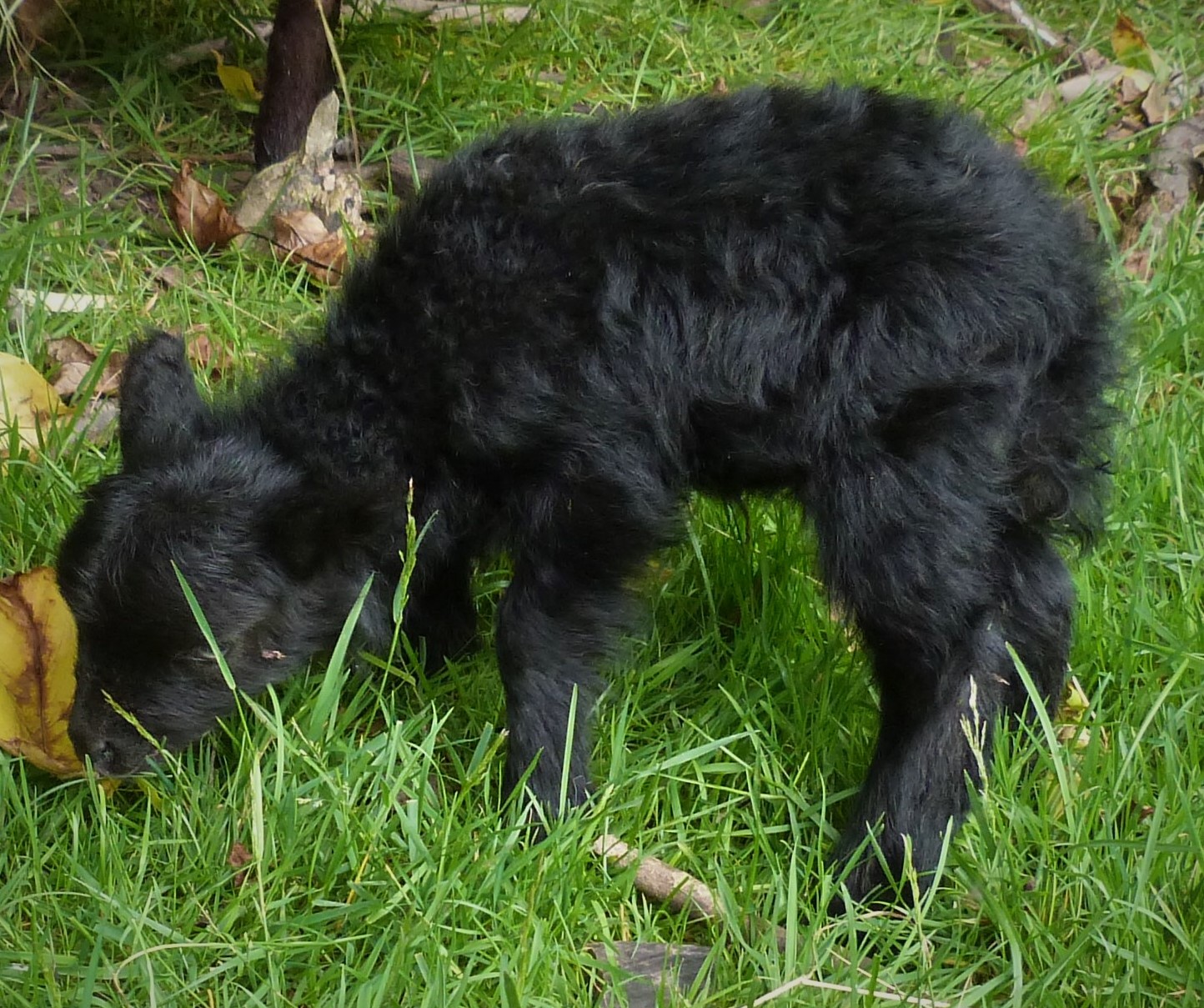
Essentially, even if a black Ouessant sheep is born black, we can identify two different phenotypes : over time, particularly after 4 or 5 months, a real difference can be seen.
These two different phenotypes are a brownish black and an intense black : The brownish black is a black with brown sun-bleached tips and the intense black is a black that does not sun-bleach.
From a genetic point of view, it would seem that the brownish black is dominant, or possibly incompletely dominant, to the intense black that does not sun-bleach.
The brownish black is very widespread in Ouessant sheep in France and makes up the vast majority of black Ouessant sheep (roughly 90%).
On the other hand, Intense black Ouessant sheep that do not sun-bleach are actually quite rare.
The following photos show just how strikingly different brownish black and intense black Ouessant sheep are.
Effectivement, même si un mouton d’Ouessant noir est bien noir à la naissance, nous pouvons identifier deux phénotypes différents : au fil du temps, surtout au bout de 4 à 5 mois, une nette différence peut se montrer.
Les deux phénotypes comprennent le noir brunissant, un noir avec les pointes de la toison qui se décolorent sous les rayons du soleil, et le noir intense, un noir très intense qui ne se décolore pas sous les rayons du soleil.
Sur le plan génétique, il semblerait que le noir brunissant est dominant, ou peut être à dominance incomplète, au noir intense qui ne se décolore pas.
Le noir brunissant est très répandu dans le cheptel ouessantin en France où il représente la très grande majorité de moutons noirs (disons plus ou moins 90%).
Rare sont les moutons d’Ouessant noir intense qui ne se décolorent pas sous les rayons du soleil.
Les photos suivantes montrent bien la différence très frappante entre le noir brunissant et le noir intense chez le mouton d’Ouessant.
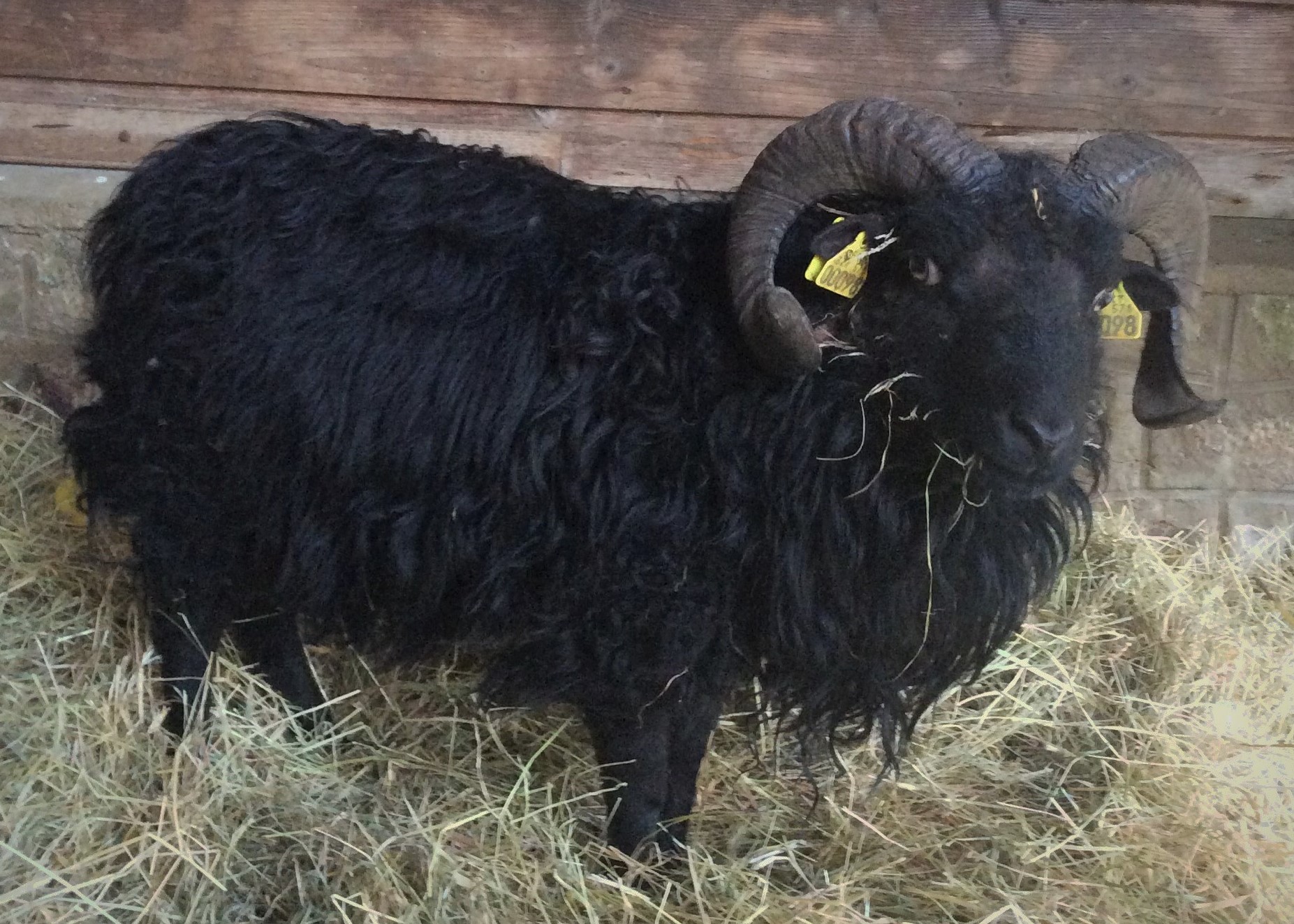
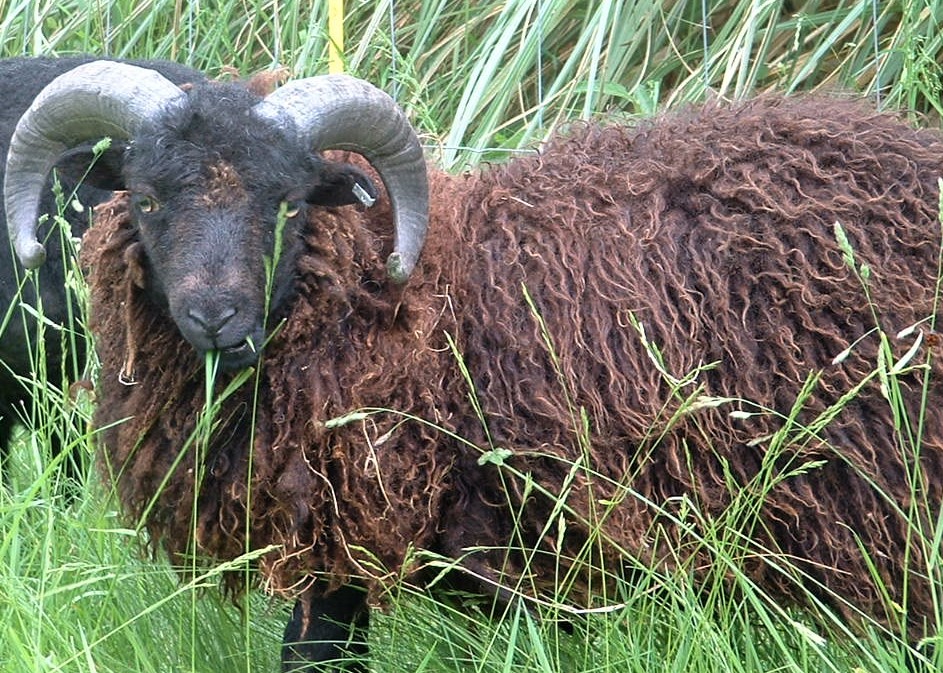
It’s important to note that Briscoe and Noz, the two rams in the above photo, share the same genotype, at least at three principal loci : they are both AaAaB+B+F+F+.
In other words, they are both homozygous for nonagouti at the Agouti locus, homozygous for wild at the Brown locus, and homozygous for wild at the Fading locus. So we need to look elsewhere for an explanation of this phenomenon.
In 2012, Roger Lundie, a specialist in sheep color genetics visited my flock. As soon as he entered the field, he pointed to ‘TitBijou, an intense black ewe, and explained that this intense black is the result of a genetic modifier that intensified the base color of the sheep.
This intense black is a beautiful color variant in Ouessant sheep and insofar as it is recessive to brownish black, special care should be taken in order to conserve it.
This modifier produces the blackest black and is one of the particularities of the St. Symphorien line of Ouessant Sheep which I am currently working on.
‘TitCadeau, the little ram that I showed you last week, is a member of the St. Symphorien line and just like ‘TitBijou, he is intense black.
Can you tell which of these two lambs is ‘TitCadeau ?
Il faut noter que Briscoe et Noz, les deux béliers dans la photo ci-dessus, partagent le même génotype, au moins en ce qui concerne les trois locus principaux : ils sont tous les deux AaAaB+B+F+F+.
C’est à dire ils sont tous les deux homozygote pour nonagouti au locus Agouti, homozygote pour wild au locus Brown, et homozygote pour wild au locus Fading. Alors, l’explication de ce phénomène se trouve ailleurs !
En 2012, Roger Lundie, spécialiste en génétique de couleur chez l’ovin est venu visiter mon troupeau. Tout de suite il a montré du doigt ‘TitBijou, brebis d’un noir intense, pour m’expliquer que ce noir est le résultat d’un modificateur génétique qui intensifie la couleur de base.
C’est une très belle variante chez le mouton d’Ouessant et dans la mesure où elle est récessive au noir brunissant, il faut faire un effort pour ne pas la perdre.
Ce modificateur qui rend le noir encore plus noir, est une des spécificités chez la lignée St. Symphorien du mouton d’Ouessant sur laquelle je travaille actuellement.
‘TitCadeau, petit bélier que je vous ai montré la semaine dernière, fait partie de la lignée St. Symphorien et tout comme ‘TitBijou, il est d’un noir intense.
Est-ce vous pouvez devinez lequel de ces deux agneaux est ‘TitCadeau ?
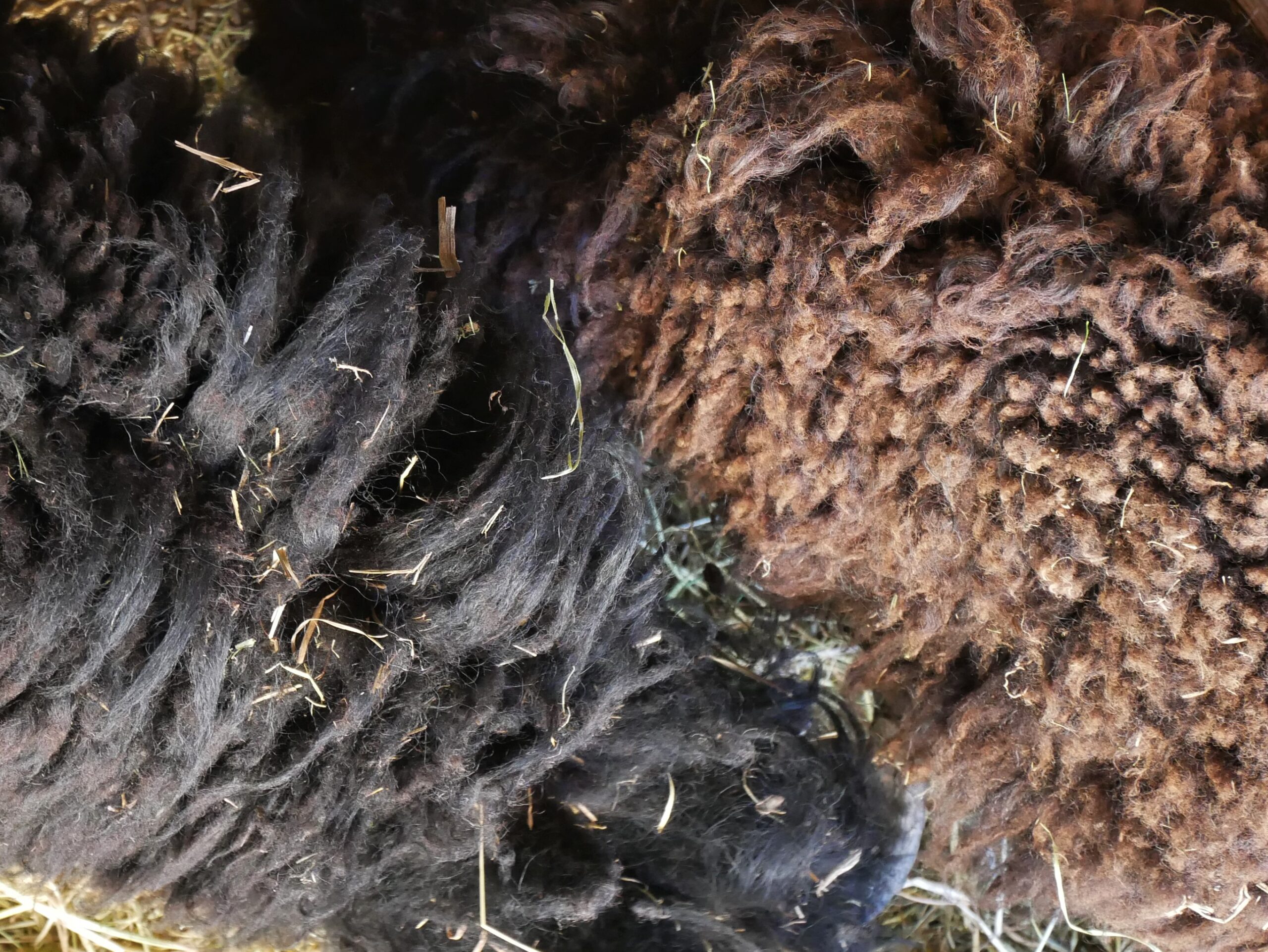
But that’s not all. This modifier that produces the blackest black also impacts the looks of sheep in other surprising ways.
We’ll talk more about that later !
… to be continued …
Mais attention, ce modificateur qui rend le noir encore plus noir, fait bien plus d’effets sur l’allure d’un mouton qu’on aurait pu croire.
Je vous en parlerai bientôt !
… à suivre …


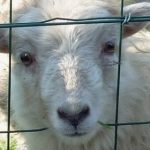
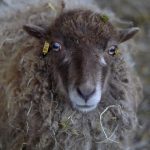
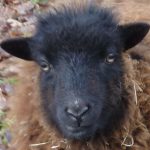
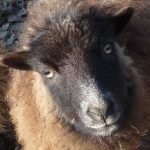
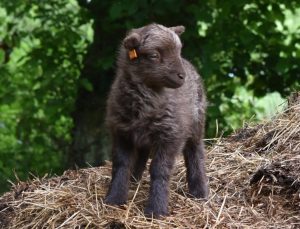

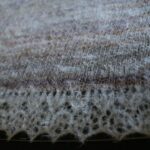
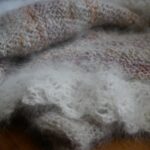
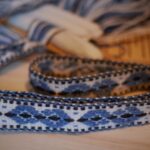
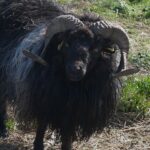
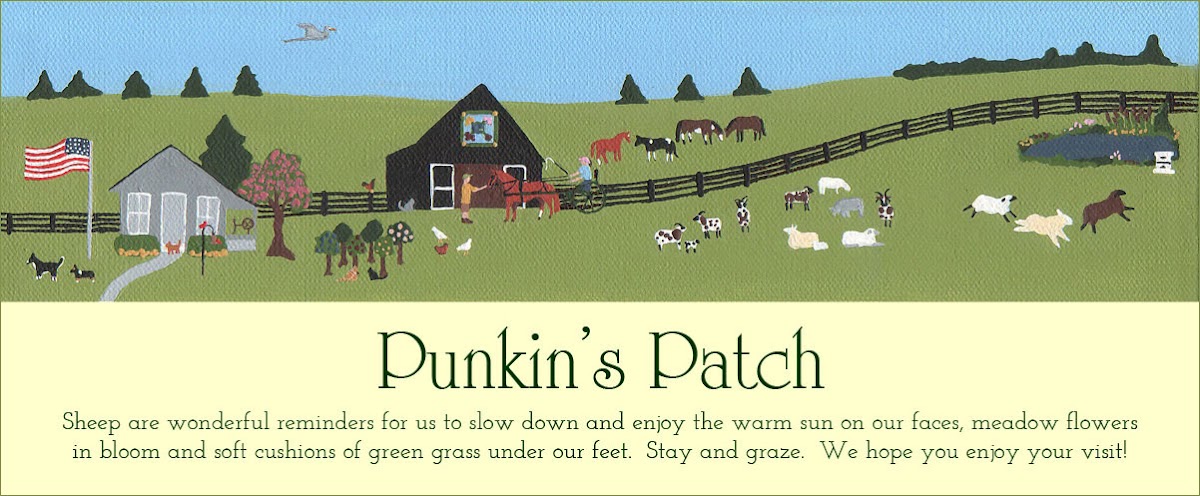

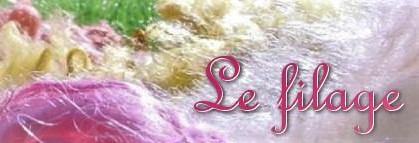
Such beautiful sheep. I am so glad that you back again. So inspiring.
Thank you so much Barbara.
It’s good to be back.
Best regards,
Diane